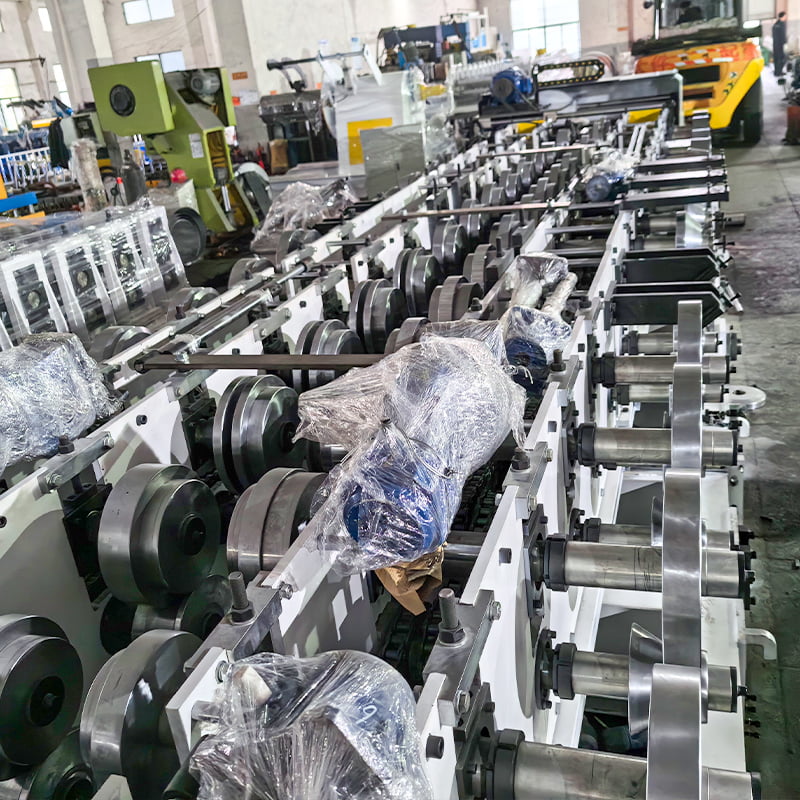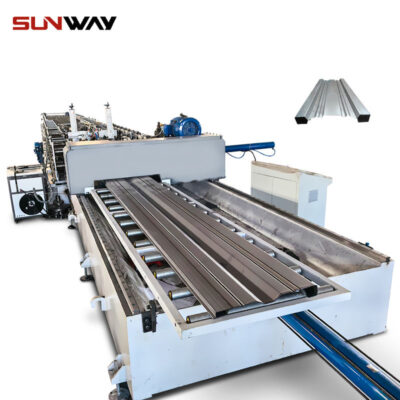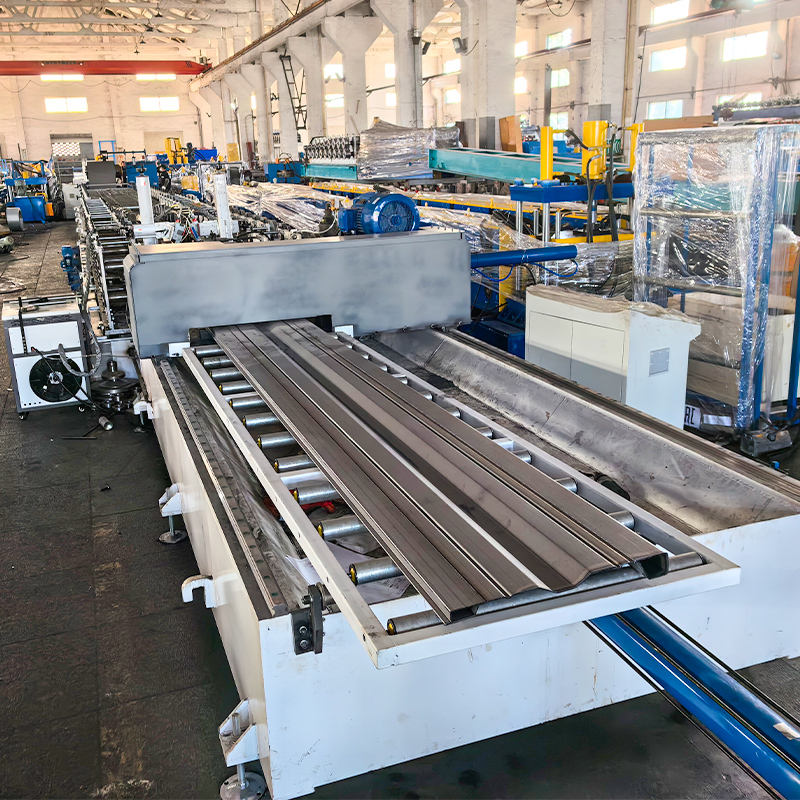When it comes to roofing solutions, profile metal roofing stands out for its durability, style, and versatility. In this guide, we’ll explore everything you need to know, from types and installation to maintenance and suppliers, all with a conversational touch to help you decide if profile metal roofing is the right fit for your next project.
Overview of Profile Metal Roofing
Profile metal roofing isn’t just a modern trend—it’s a top choice for residential, commercial, and industrial applications thanks to its strength, longevity, and weather resistance. The term “profile” refers to the specific design, contour, and structure of the metal sheets, which can include various patterns like corrugated, trapezoidal, and ribbed, all providing unique benefits. But why is it such a popular choice?
Profile metal roofing combines aesthetics with durability, offering numerous styles, colors, and finishes to fit different architectural preferences. Made from materials like galvanized steel, aluminum, and zinc, these roofs are built to last, resisting rust, fire, and high winds. In addition to style and longevity, metal roofing is environmentally friendly and energy-efficient, helping to reduce cooling costs in warmer months.

Types of Profile Metal Roofing
Different types of profile metal roofing are designed to meet a range of requirements. Here’s a breakdown of popular types, each with its own unique properties.
| Profile Metal Roofing Type | Description |
|---|---|
| Corrugated Metal Roofing | Wavy-shaped design offering high strength-to-weight ratio. Great for residential, agricultural, and industrial use. |
| Trapezoidal Metal Roofing | Rigid, rectangular profile known for high load-bearing capacity. Popular in warehouses and factories. |
| Standing Seam Metal Roofing | Clean, modern look with raised seams, highly weather-resistant, and ideal for residential or commercial applications. |
| Snap Lock Metal Roofing | Similar to standing seam but with a faster installation process. Good for residential properties in areas with heavy rain or snow. |
| Batten Seam Metal Roofing | Features large seams secured with battens, making it highly durable for industrial or agricultural buildings. |
| Flat Seam Metal Roofing | Flat panels with interlocking seams, best for low-slope roofs. |
| Box Rib Metal Roofing | Strong profile with deeper ribs, often used in industrial buildings where heavy loads are common. |
| Metal Tile Roofing | Mimics the look of traditional clay tiles but with metal’s durability. Ideal for residential homes desiring a classic look. |
| Shingle-Style Metal Roofing | Resembles asphalt shingles but offers a longer lifespan and better resistance to weather. |
| Custom Profile Metal Roofing | Bespoke designs tailored for specific projects, offering unique aesthetic appeal and functionality based on requirements. |
Each type offers distinct advantages. For instance, corrugated metal roofing is budget-friendly and flexible, whereas standing seam roofing excels in extreme weather. Choosing the right profile will depend on factors like budget, climate, building structure, and aesthetic preference.
Corrugated Iron Sheets: A Comprehensive Guide
Corrugated iron sheets are one of the most common forms of profile metal roofing. They feature a repetitive wavy pattern, which enhances structural strength and resilience.
Benefits of Corrugated Iron Sheets
- Cost-Effective: Generally cheaper than flat metal sheets while offering high durability.
- Easy to Install: Lightweight and easy to handle, making installation quick and efficient.
- High Durability: Resistant to rust (when galvanized), UV rays, and extreme weather.
- Sustainability: Made from recyclable materials, making them environmentally friendly.
Working Process of Profile Metal Roofing Installation
Profile metal roofing installation involves several stages, including preparation, fitting, fastening, and sealing. Let’s look at each step more closely.
- Preparation: Before installation, measure the roof area and prepare materials like insulation, underlayment, and the profile sheets themselves.
- Layout Planning: Proper planning is essential to ensure that sheets are aligned correctly, minimizing material waste and achieving the desired appearance.
- Installation of Underlayment: Placing an underlayment layer is crucial for waterproofing and insulation.
- Laying the Sheets: Starting from the bottom of the roof, each sheet is laid, overlapping to prevent water seepage.
- Fastening: Profile sheets are secured with screws or nails, using washers to create a tight seal.
- Sealing and Finishing: Once all sheets are in place, sealants are applied to seams and edges for waterproofing.
Key Components in Profile Metal Roofing Installation
| Component | Function |
|---|---|
| Underlayment | Adds a waterproof layer between the roof deck and metal sheets. |
| Fasteners | Secure the metal sheets to the structure, often used with washers for extra hold. |
| Sealant | Seals gaps and prevents water ingress. |
| Ridge Caps | Cover the roof ridge, preventing water from entering through the seam where two sides meet. |
| Closure Strips | Installed at edges and valleys to prevent water and debris from entering. |
-
 Carriage Board Roll Forming Machine
Carriage Board Roll Forming Machine -
 Highway Guardrail End Terminal Forming Machine
Highway Guardrail End Terminal Forming Machine -
 Highway U/C Post Roll Forming Machine
Highway U/C Post Roll Forming Machine -
 2 Waves Highway Guardrail Roll Forming Machine
2 Waves Highway Guardrail Roll Forming Machine -
 3 Waves Highway Guardrail Roll Forming Machine
3 Waves Highway Guardrail Roll Forming Machine -
 Vineyard Post Roll Forming Machine
Vineyard Post Roll Forming Machine -
 Auto Size Changeable Sigma Purlin Roll Forming Machine
Auto Size Changeable Sigma Purlin Roll Forming Machine -
 Electrical Cabinet Frame Roll Forming Machine
Electrical Cabinet Frame Roll Forming Machine -
 Din Rail Roll Forming Machine
Din Rail Roll Forming Machine
Metal Roofing Machine Speed and Efficiency
To produce profile metal roofing efficiently, machines are critical. Here’s a comparison of common machine speeds and their impact on productivity.
| Machine Type | Average Speed (m/min) | Efficiency (%) | Application |
|---|---|---|---|
| Roll Forming Machine | 10-30 | 90% | Mass production of profile sheets. |
| Cutting Machine | 20-50 | 85% | Precision cutting to specific lengths |
| Seaming Machine | 5-15 | 80% | Seam integration in standing seam profiles. |
Customized Mechanical Parameters for Profile Metal Roofing
Choosing the right specifications is essential. Here’s an outline of customizable parameters for profile metal roofing.
| Parameter | Description |
|---|---|
| Thickness | Ranges from 0.3mm to 1.2mm depending on durability and weight requirements. |
| Width | Varies between 800mm and 1200mm based on coverage area per sheet. |
| Material Coating | Options include galvanization, aluminum, and zinc for added protection. |
| Color Finish | Customizable for aesthetic and reflective properties. |
Applications and Uses of Profile Metal Roofing
| Application Area | Description |
|---|---|
| Residential | Roofing for homes, often in the form of metal tiles or shingles for aesthetic appeal. |
| Commercial Buildings | Offices, retail spaces, and malls often use standing seam profiles for a sleek, modern appearance. |
| Agricultural Buildings | Barns, sheds, and silos benefit from corrugated or trapezoidal metal roofing for high durability. |
| Industrial Warehouses | High-strength options like box rib or trapezoidal profiles used to withstand heavy equipment storage. |
Installation, Operation, and Maintenance Guidelines
| Phase | Guidelines |
|---|---|
| Installation | Ensure sheets are fastened securely, with overlaps for water protection. |
| Operation | Check for loosening screws or nails, especially after extreme weather. |
| Maintenance | Annual inspections and prompt repair of any damage or rust spots. |
How to Choose the Right Supplier for Profile Metal Roofing
| Criteria | Description |
|---|---|
| Reputation | Look for reviews, certifications, and industry experience. |
| Product Range | Ensure the supplier offers a variety of profile types, finishes, and custom options. |
| Warranty | Opt for suppliers that offer warranties on materials and workmanship. |
| Customer Service | Responsive customer support is crucial for long-term maintenance and repair queries. |

Advantages and Disadvantages of Profile Metal Roofing
| Pros | Cons |
|---|---|
| Durability | Higher upfront cost compared to asphalt shingles. |
| Energy-Efficient | Can be noisy in heavy rain without insulation. |
| Eco-Friendly | Requires regular inspections to prevent corrosion. |
FAQ
| Question | Answer |
|---|---|
| What is profile metal roofing? | Profile metal roofing refers to metal sheets with specific shapes, like corrugated or trapezoidal, providing structural strength. |
| Is metal roofing noisy? | With proper under layment, noise can be minimized, but it may be louder than traditional roofs in heavy rain. |
| How long does metal roofing last? | Typically, profile metal roofing lasts 40-70 years depending on material and maintenance. |
